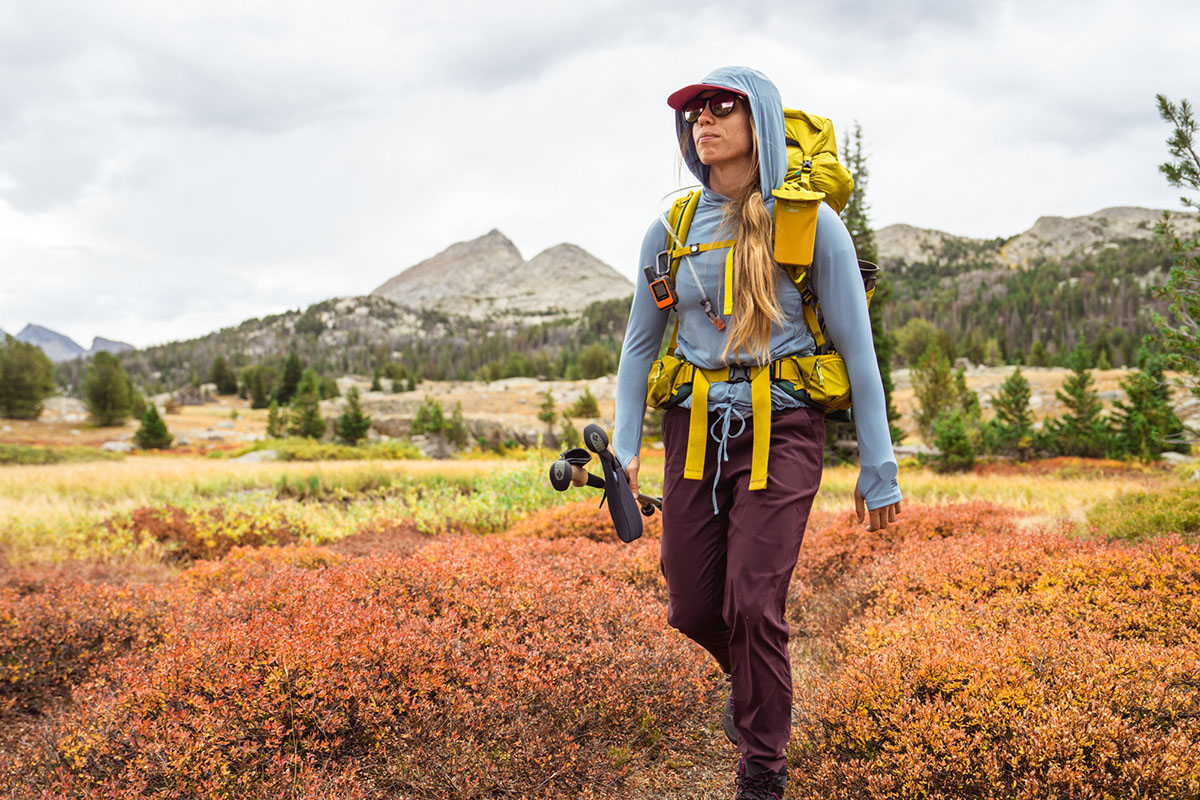
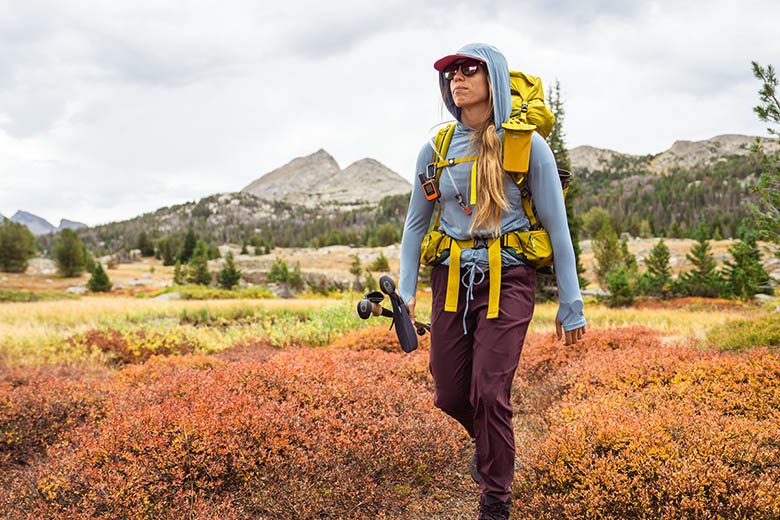
Price: $70
UPF: 50+
Materials: 88% polyester, 12% elastane
Weight: 4.2 oz.
What we like: Silky smooth fabrics, great mobility, and flattering fit—all at a reasonable price.
What we don’t: Not the most breathable or odor-resistant option, especially for those prone to working up a sweat.
See the Men's Crater Lake Hoody See the Women's Crater Lake Hoody
We love sun hoodies for everything from hiking to rock climbing, paddling, and backcountry skiing—basically, any activity that involves a solar reflector like rock, water, or snow. Among the myriad options, Mountain Hardwear’s Crater Lake Hoody was quick to impress with its class-leading combination of value, performance, and style. We tested both the men’s and women’s versions on adventures ranging from backpacking in Wyoming to climbing and skiing in Washington and couldn’t get enough of the hoody’s buttery-soft feel and excellent coverage. Below we outline our experiences with the Crater Lake Hoody. To see how it stacks up to the competition, check out our article on the best sun protection shirts.
The Mountain Hardwear Crater Lake Hoody has a lot going for it, and the first thing that stood out to us was comfort. With a buttery-soft “solar knit jersey” fabric that’s comprised of 88% polyester and 12% elastane, the Crater Lake has a very smooth and supple feel that makes it easy to wear all day. There’s enough stretch that we’ve experienced no restriction to movement when backpacking, hiking, or climbing, and the fabric has a cooling effect that we just can’t get enough of. Taken together, the Crater Lake is a true standout in the market and goes largely unnoticed throughout the day, whether you're hundreds of feet up a rock wall, skinning deep into the backcountry, or setting up camp miles from the trailhead.
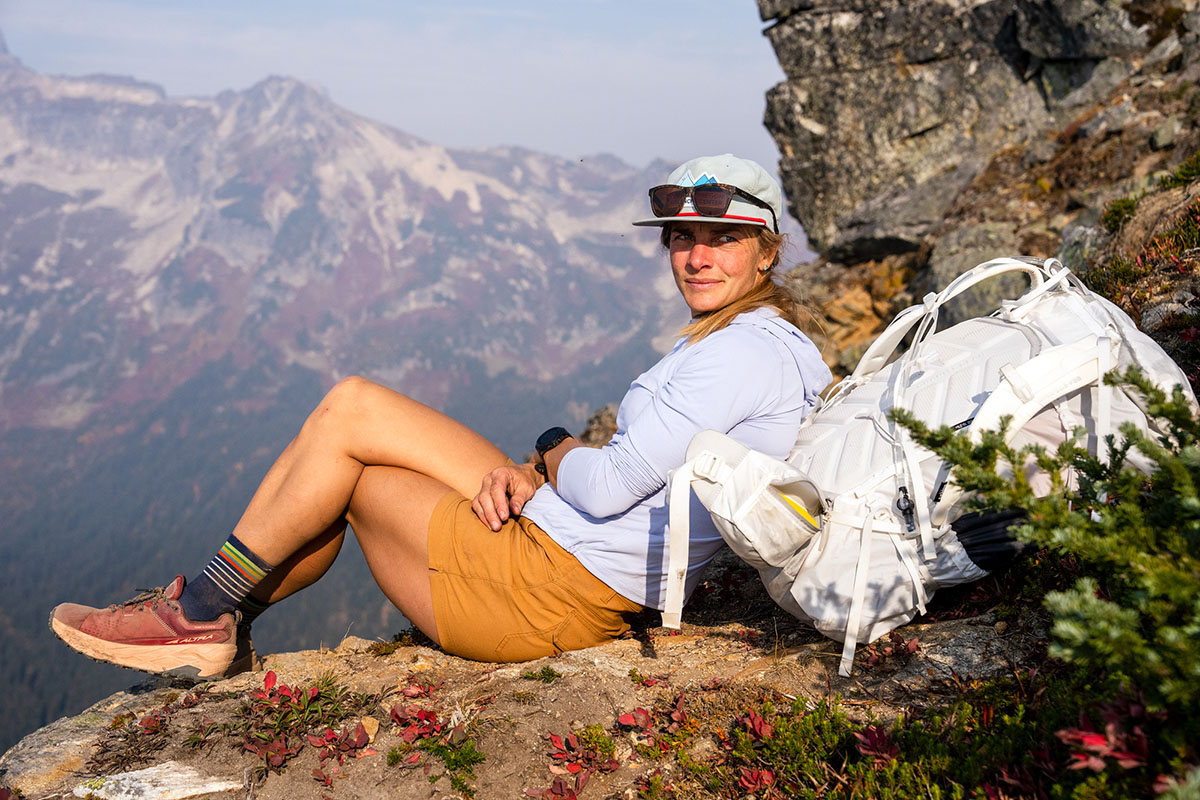
Features like thump loops and drawcords can also have an impact on comfort, and we have mixed feelings in this regard. On the bright side, the thumb loops are soft, nicely sized, and don’t cause any chafing or rubbing. It’s a similar story with the hood, which is a little big on its own but pairs nicely over a helmet or ball cap with no impact to mobility. However, the women’s version of the Crater Lake features a zippered pocket at the right hip and a drawcord at the hem. While both features are handy in certain circumstances, we wish Mountain Hardwear had left them out (like they do on the men’s version) to minimize bulk underneath a backpack hipbelt or climbing harness.
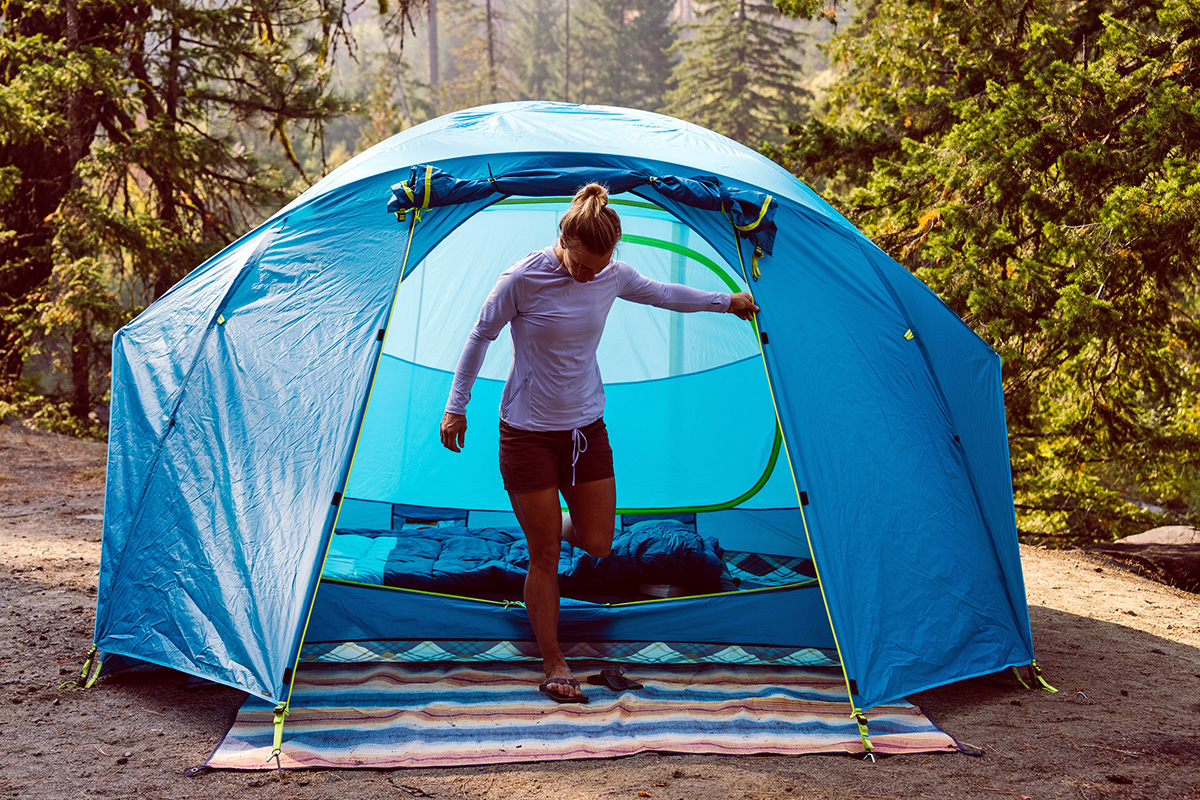
UPF ratings measure how much ultraviolet (UV) radiation a fabric blocks, with UPF 30 being the minimum rating that qualifies for the Skin Cancer Foundation’s official recommendation. The Crater Lake Hoody boasts a UPF 50+ rating, which means it blocks more than 98% of the sun’s rays and allows less than 2% (1/50th) to penetrate. For reference, this is the highest rating achievable, making the Crater Lake one of the most protective designs on the market. We have yet to meet anyone who’s been burned through a sun shirt, but if your priority is maximizing sun protection, the Crater Lake is a great option to consider.
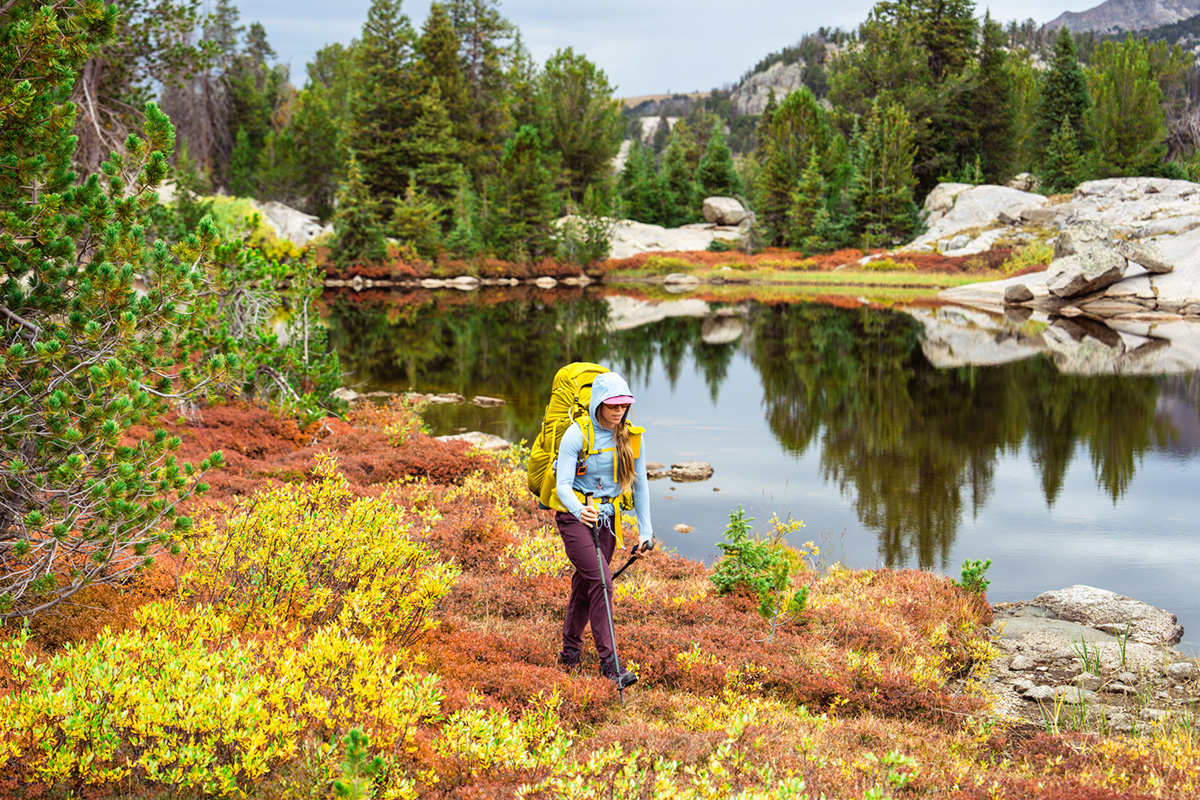
We came away with mixed reviews regarding the Crater Lake’s breathability. On one hand, the smooth fabric has an enjoyable cooling effect, and we’ve managed to stay comfortable while climbing and backpacking in temperatures that reached into the upper 70s Fahrenheit. However, for higher-output activities (e.g., running or mild-weather ski tours) and those prone to building up a sweat, there are certainly more breathable options to consider. If this sounds like you, Outdoor Research’s Echo Hoodie offers a notable boost in ventilation with a more porous fabric and a looser cut that helps keep air moving. It’s worth noting that opting for a lighter colorway will help—darker colors are significantly warmer on hot days—but the Echo is our preferred option for truly hot-weather hiking.
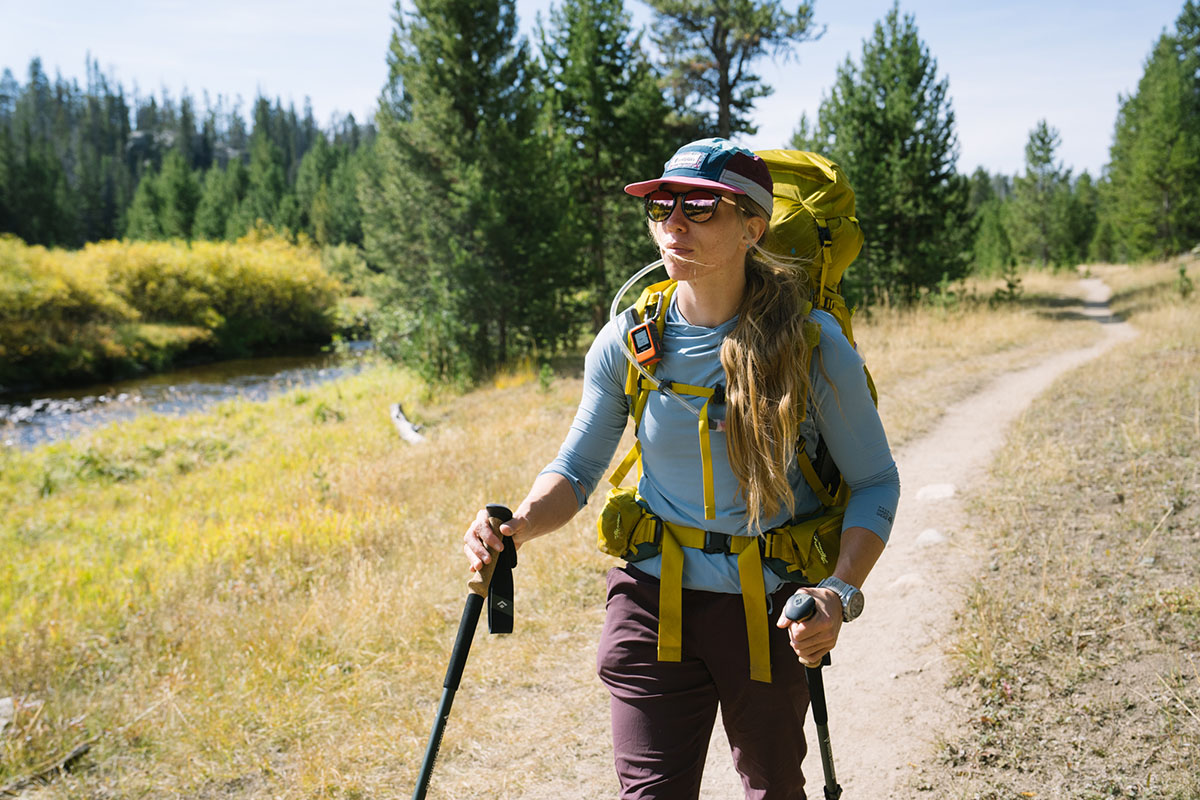
Synthetic fabrics are known to build stink, which isn’t a great characteristic when sweat is practically a given. And unfortunately, the Crater Lake Hoody fares worse than most due to the lack of anti-odor treatment. In fact, our male tester described the hoody as “a megaphone for B.O.” To be fair, he does run warm and is prone to building up a sweat during exertion, but there’s no denying that the Crater Lake holds onto odor more readily than alternatives like the aforementioned OR Echo and Free Fly Bamboo Lightweight Hoodie, which is made with mostly natural fibers (70% viscose from bamboo) that resist stink better than synthetics.
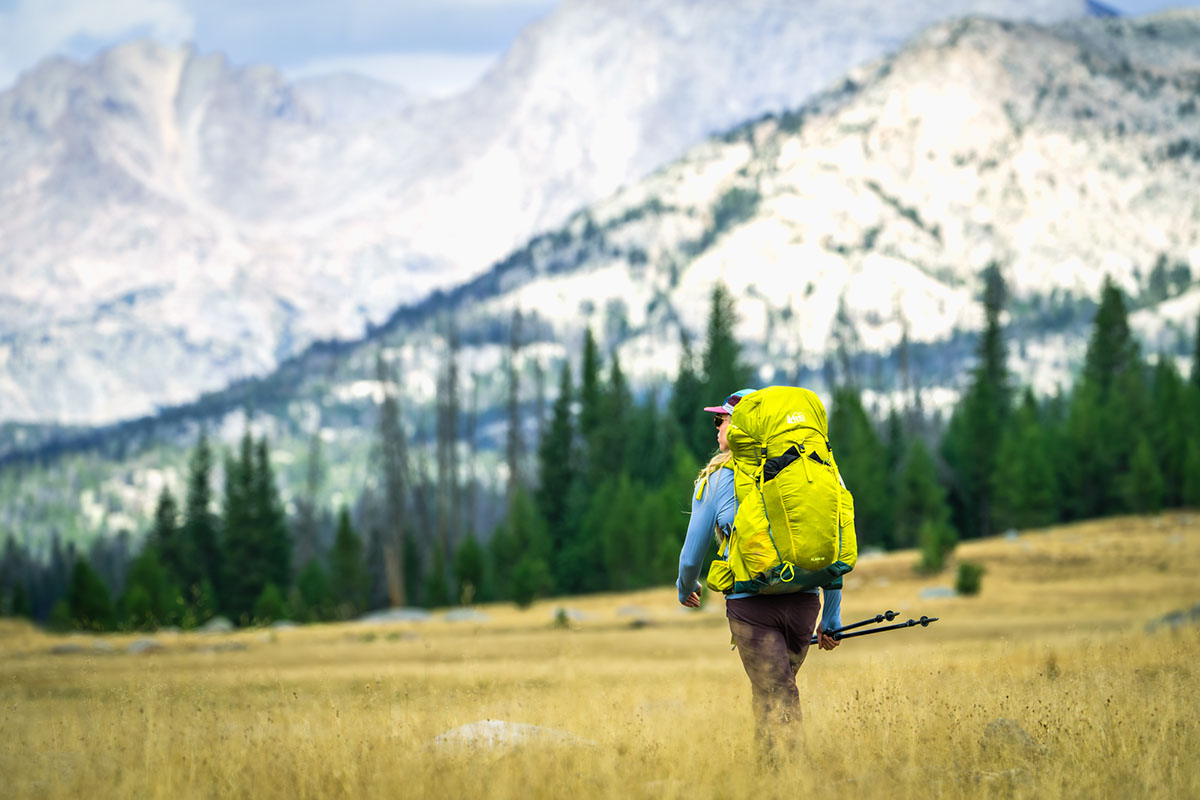
At 4.2 ounces, the Crater Lake Hoody is impressively light with a barely-there feel to match. For reference, this makes it the lightest option currently featured in our round-up of the best sun protection shirts, even undercutting Outdoor Research’s summer-friendly Echo Hoodie (5.2 oz.). Other lightweight designs include Arc’teryx’s Cormac Hoody (5.6 oz.), Patagonia’s Capilene Cool Daily Hoody (6.3 oz.), and Rab’s Force Hoody (5.8 oz.), but the Crater Lake is the only design we’ve found that checks in under 5 ounces. And in testing, the hoody went largely unnoticed throughout the day, whether we were backpacking, climbing, or backcountry skiing.
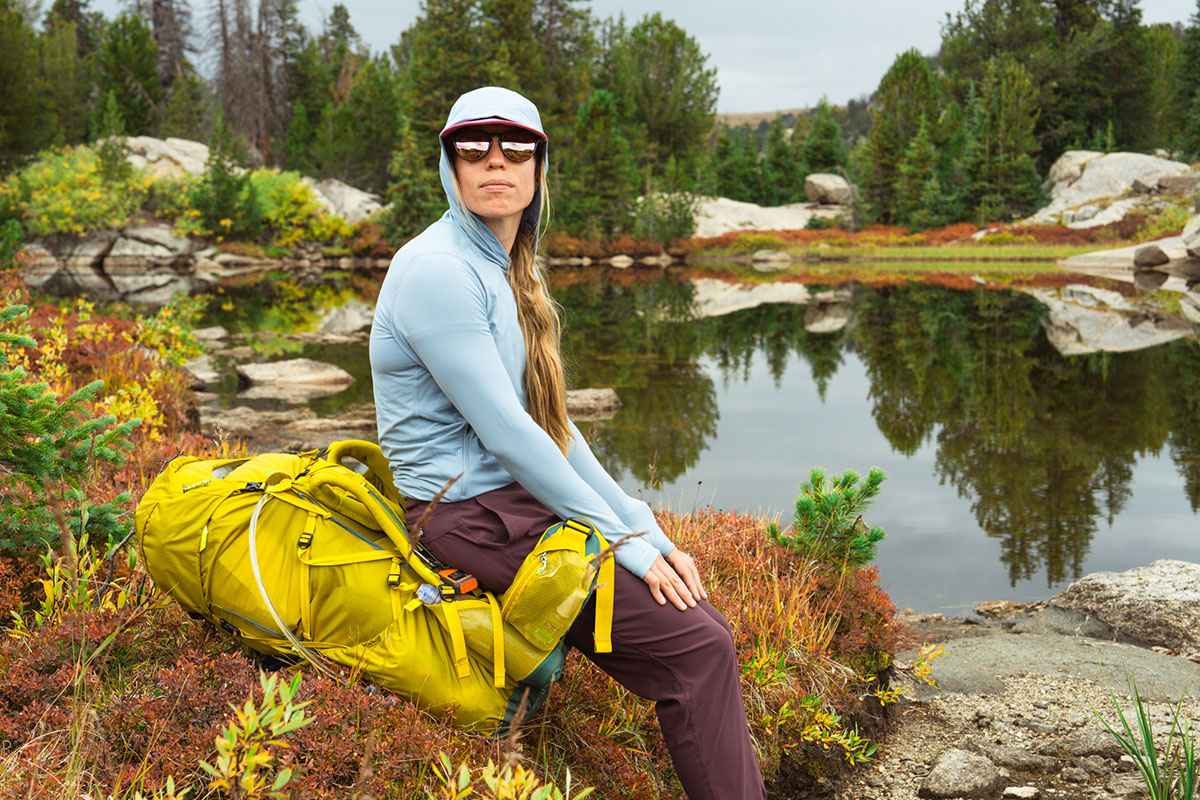
Both the men’s and women’s Crater Lake hoodies feature thumb loops and a three-panel hood that slides nicely over a climbing helmet. As we touched on above, the thumb loops are made from the same soft and stretchy material as the rest of the hoody and haven’t caused either of our testers any chafing or discomfort. Additionally, the hood is nicely sized and stays in place over a helmet or ball cap, although we found it a little big and floppy on its own.
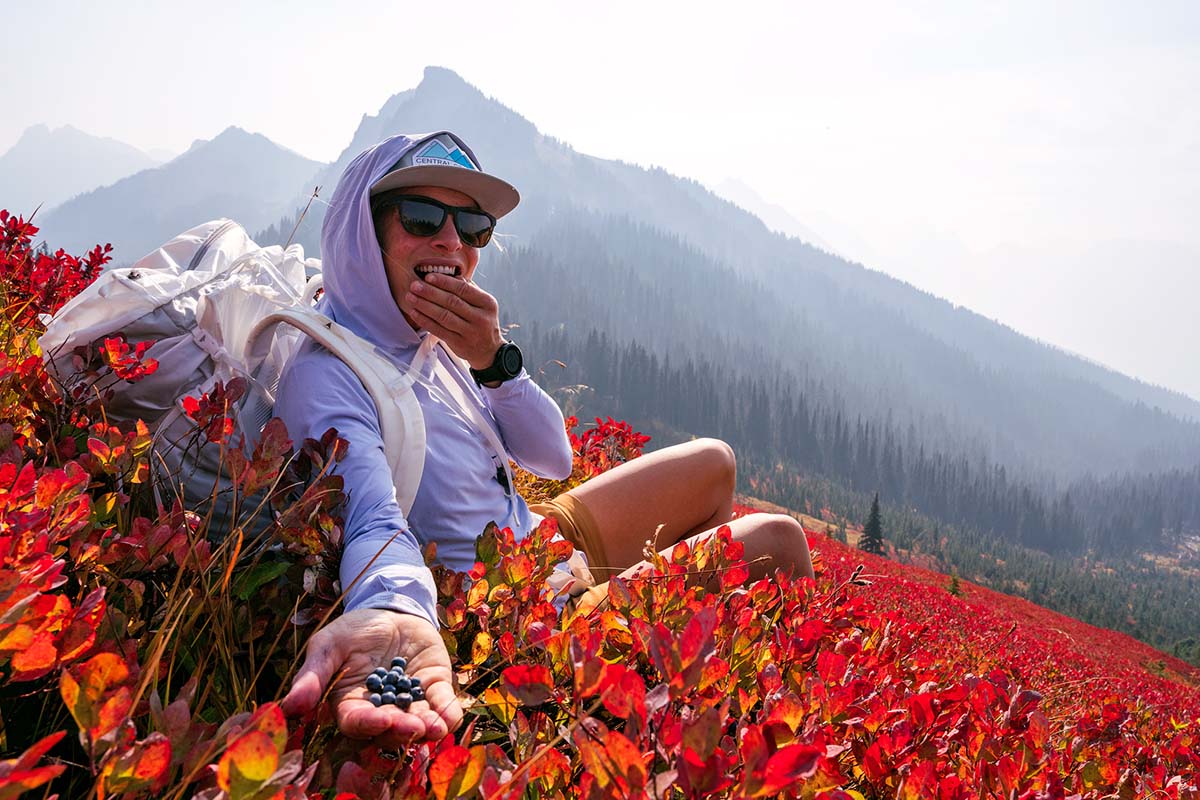
One key difference between the men’s and women’s designs is the neckline, with the men’s hoody featuring solid coverage with the hood on and the women’s leaving a good portion exposed. The women’s Crater Lake Hoody also tacks on a small zippered pocket at the right hip and drawcord adjustability at the hem. In our experience, both additions add excess bulk underneath a harness or hipbelt, but the pocket can be nice for stashing a credit card, lip balm, or car keys when running errands, walking the dog, or going on a quick jog without a pack.
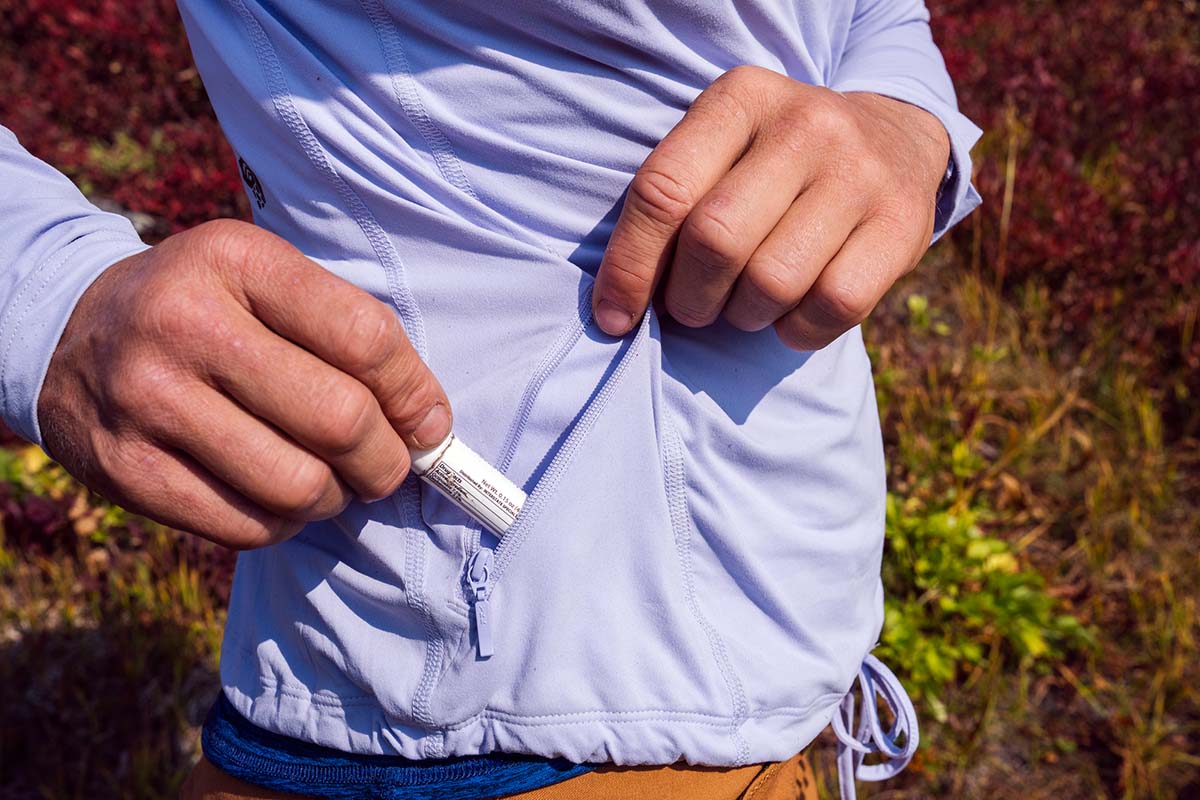
Overall, we’ve been very impressed by the Crater Lake's ability to withstand frequent use and abuse. Both the men’s and women’s versions that we tested are holding up well after months of use, which is largely due to the stretchy build that “gives” under pressure rather than tearing or snagging on rock, branches, and other abrasive surfaces. The stitching is still intact, the logo hasn’t begun to peel, and there’s no obvious deterioration in the form of pilling or fraying. We do have concerns about the fabric stretching out and losing its shape over time—the men’s version that we tested has already begun showing some signs of this around the cuffs—but all in all, the Crater Lake Hoody strikes us as very well built and hardwearing.
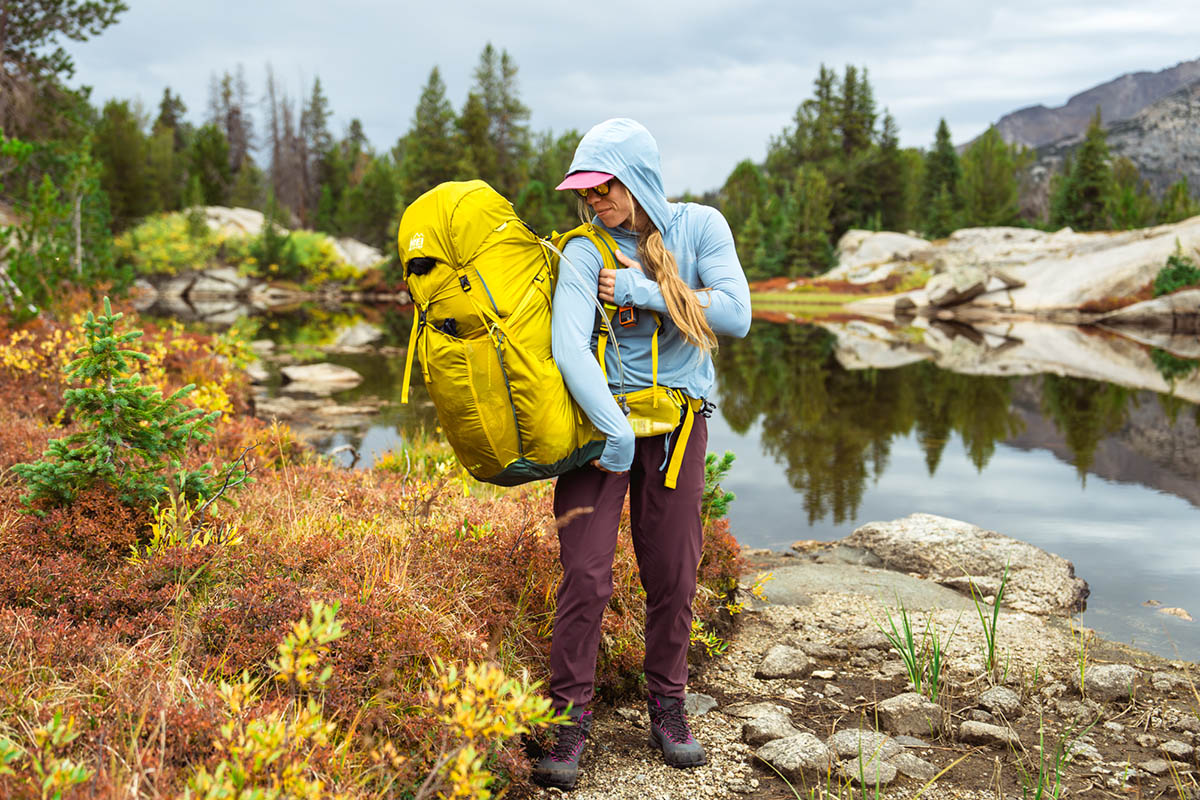
The Crater Lake Hoody fits on the snugger end, which has its pros and cons. On one hand, we like the more athletic cut for technical uses like rock climbing when excess fabric can get in the way. However, the fact that it sits closer to your body detracts from overall breathability, and opting for a more free-flowing design like the Outdoor Research Echo would allow more room for airflow. In terms of coverage, the women’s Crater Lake has a center back length of 25.5 inches, while the men’s is a little longer at 27.3 inches. Neither of our testers had any complaints in this regard, with both of our hoodies extending far enough past a hipbelt and harness to stay in place throughout the day.
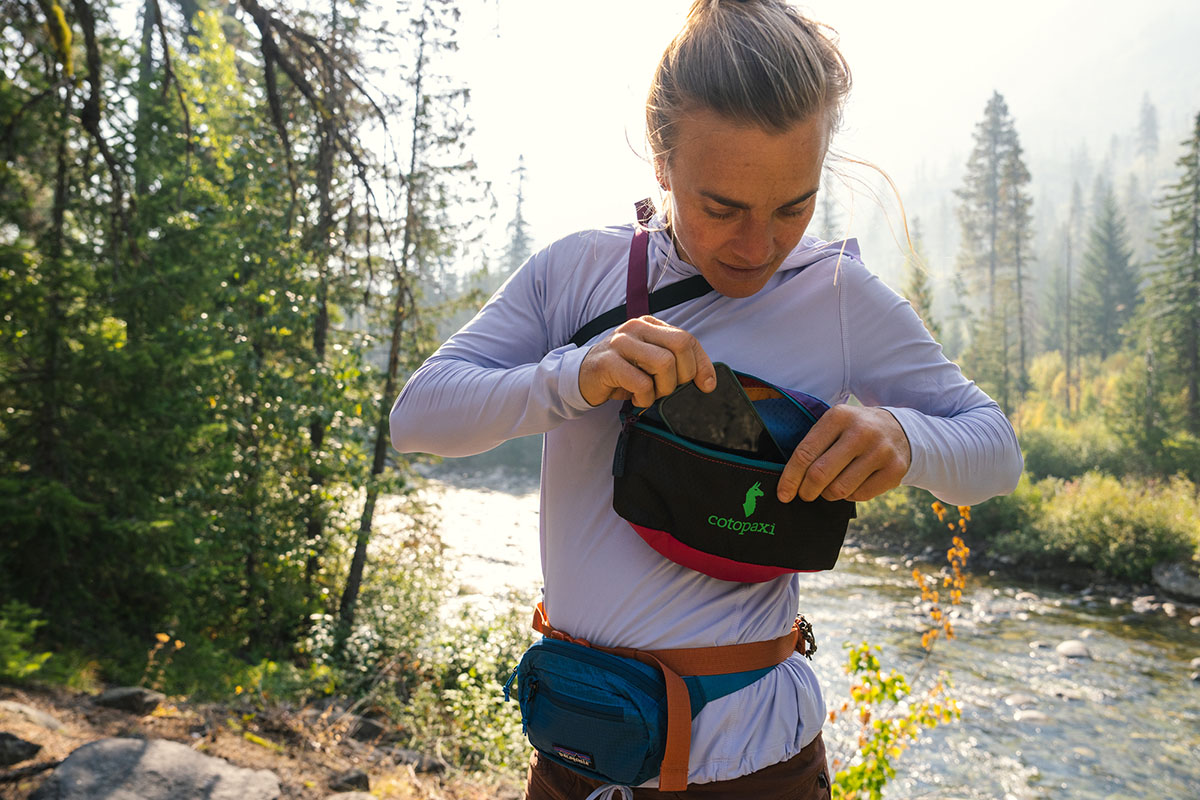
We tested the men’s and women’s Crater Lake hoodies for this review, and the design comes in several other styles. On the women’s side, Mountain Hardwear offers the Crater Lake Long Sleeve Crop and Crater Lake Crop Zip, both of which have a shorter cut than the flagship hoody. There’s also a women’s-specific Crater Lake Short Sleeve, which retails for $55 and comes in a single white colorway at the time of publishing. Rounding out the lineup is the Crater Lake Long Sleeve, which is sold in both men’s and women’s styles and is largely similar to the design that we tested but without a hood.
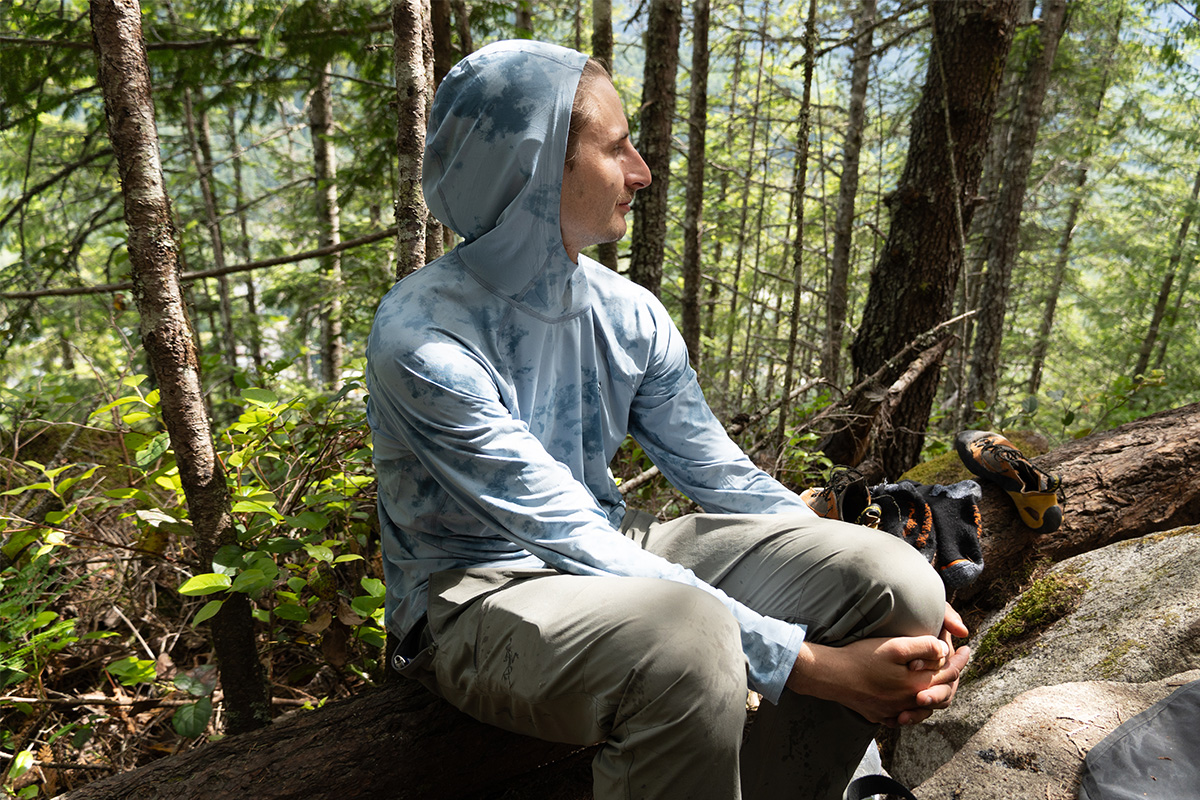
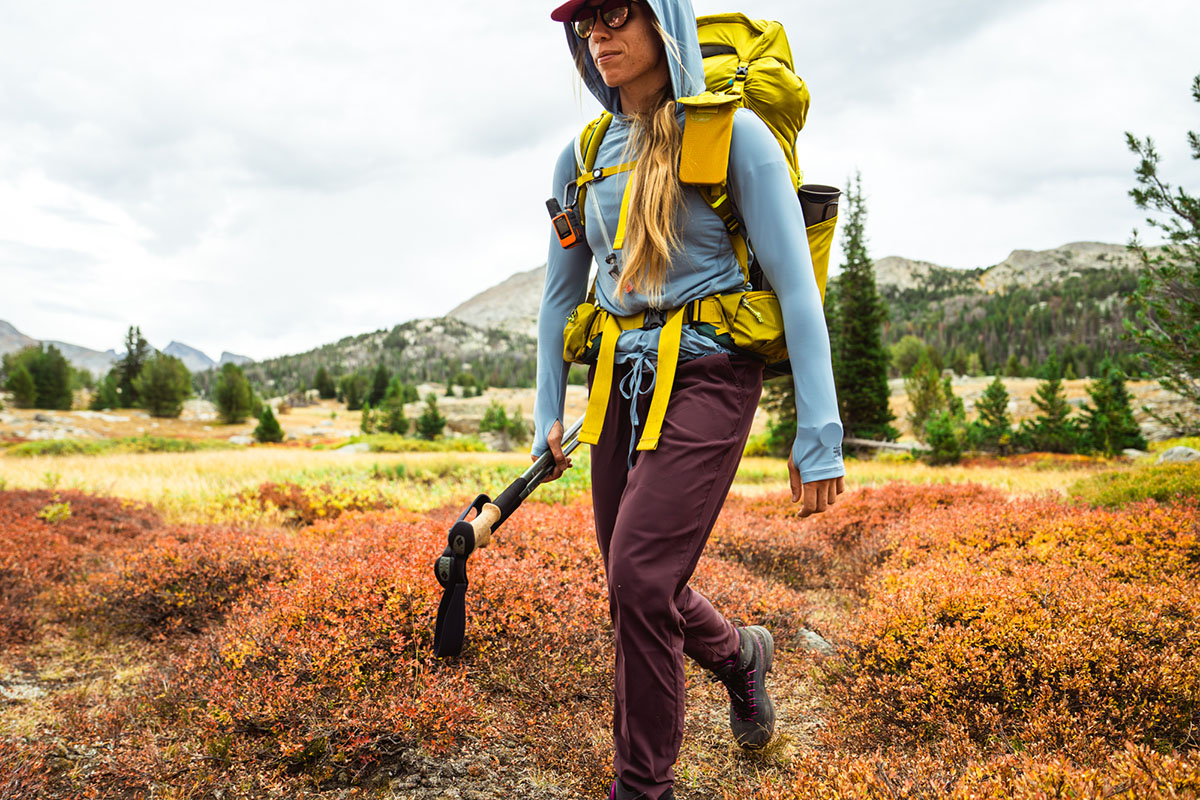
| Sun Shirt | Price | UPF | Materials | Weight | Fabric |
|---|---|---|---|---|---|
| Mountain Hardwear Crater Lake Hoody | $70 | 50+ | 88% polyester, 12% elastane | 4.2 oz. | 120 g/m2 |
| Outdoor Research Echo Hoodie | $75 | 15/20 | 100% polyester | 5.2 oz. | Unavail. |
| Arc’teryx Cormac Hoody | $90 | 40+ | 100% polyester | 5.6 oz. | Unavail. |
| Free Fly Bamboo Lightweight Hoodie | $68 | 20+ | 70% bamboo, 30% polyester | Unavail. | 140 g/m2 |
| Patagonia Capilene Cool Daily Hoody | $65 | 17-45 | 100% polyester | 6.3 oz. | 125 m/2 |
The Crater Lake Hoody is our top-rated sun protection shirt again for 2025, but there’s no shortage of options to choose from. For summertime use and those who run warm, Outdoor Research’s Echo Hoodie may be the better bet. To boost breathability, the OR features a more porous fabric and a looser cut that keeps air moving. However, the Echo’s fabric is prone to pilling and snagging and lacks the Crater Lake’s soft next-to-skin feel. The Crater Lake is also lighter by an ounce and offers better UPF protection (50+ compared to 15 to 20 for the Echo Hoodie, depending on colorway). Added up, the OR is hard to beat for hot weather and those prone to working up a sweat, but the Crater Lake wins out in most other categories, giving it the overall edge for us.
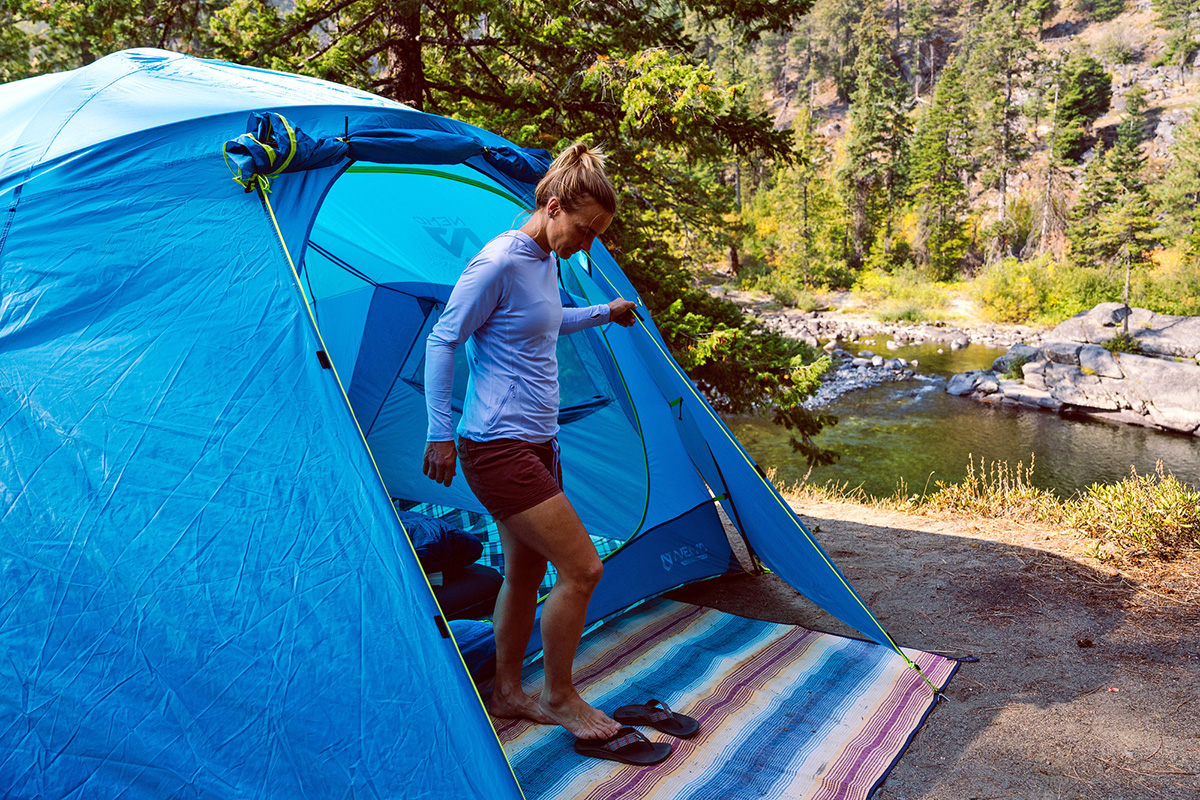
Next up is Arc’teryx’s Cormac Hoody, which costs $15 more than the Crater Lake but stacks up well in overall performance. The Cormac’s 100%-polyester build is thin, wicks moisture well, and is quick to dry while still being very cozy against the skin. The feature set also lines up nicely, including low-profile thumb loops, a hood that pairs nicely over a climbing helmet or ball cap, and a high collar that covers most of the neck (note: the women’s Taema Hoody shares the Cormac’s high collar, unlike the women’s Crater Lake, which features an overlapping design that limits coverage). The Arc’teryx also tacks on an effective anti-odor treatment, which the Mountain Hardwear lacks. However, the Crater Lake is lighter, softer, and stretchier. Combined with the small price advantage, we think the Mountain Hardwear is a little more competitive overall.
Moving away from synthetic designs, Free Fly’s Bamboo Lightweight Hoodie is made with a healthy dose of natural materials (70% viscose from bamboo and 30% polyester). This translates to an incredibly soft feel—akin to your favorite cotton t-shirt—alongside great breathability and odor resistance. Feature-wise, the Bamboo Lightweight sticks to a fairly standard but practical formula, including a deep hood and thumbholes, and we love the appropriately earthy vibe. However, despite being blended with polyester, the Free Fly’s bamboo material is prone to shrinking, requires special care when laundering, and lacks the abrasion resistance of the Crater Lake’s synthetic construction (climbers will want to look elsewhere). It’s also more prone to absorbing moisture, resulting in a longer drying time. Taken together, the Free Fly is an intriguing alternative for more casual uses, but the Crater Lake is our preferred performance design—with a much higher UPF rating to boot (50+ vs. just 20+ for the Free Fly)
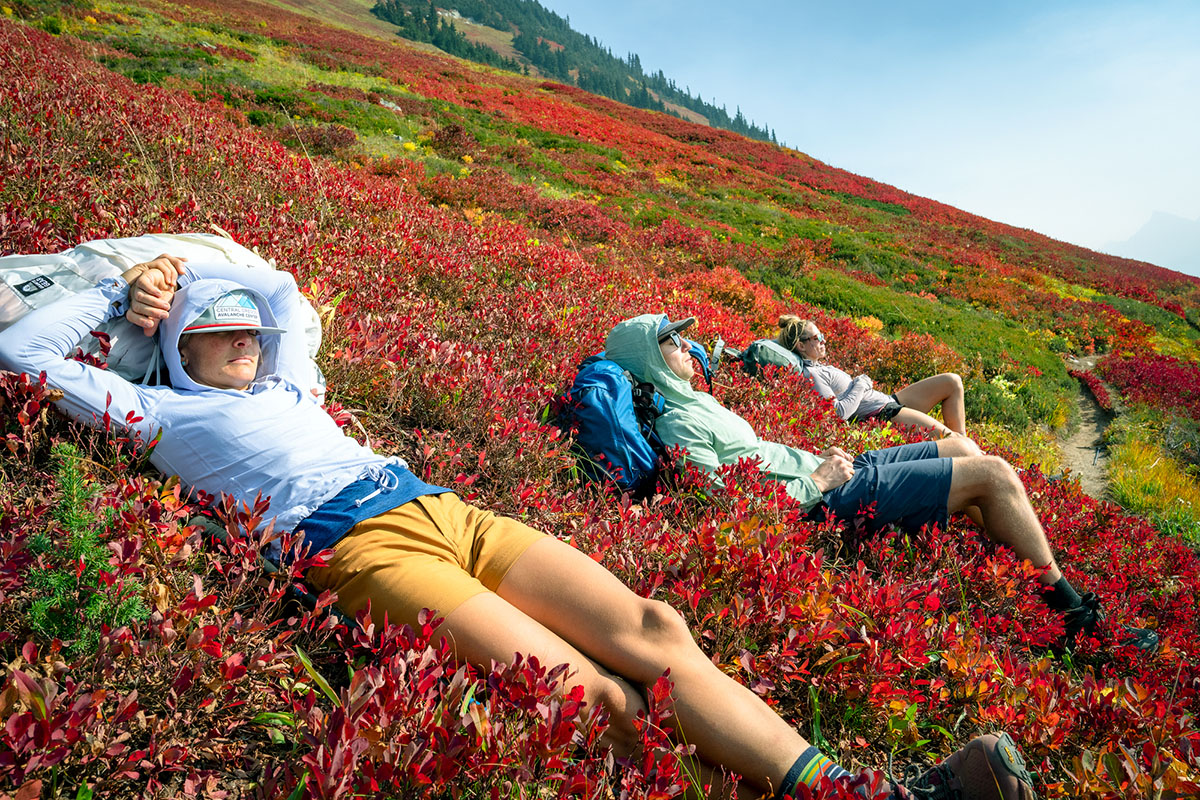
Last but not least is Patagonia’s Capilene Cool Daily Hoody, which is one of the most popular sun shirts on the market. Like the Crater Lake, the Capilene Cool uses a lightweight and supple fabric (in this case, 100% polyester), includes a bit of stretch for mobility, and has a nice cooling effect. What’s more, it keeps its shape well when wet, is quick to dry, and is better at fending off odor due to Patagonia’s effective HeiQ Pure treatment. But the devil is in the details: The Capilene Cool lacks thumbholes, has a lower UPF rating (17 to 45), doesn’t hold up as well to abrasion (e.g., repeated contact with rock), and is relatively short at both the hem and arms. You do save a little cash with the Patagonia, but we think the Crater Lake puts it all together a bit better, earning it our vote over the Capilene Cool.
If you’re thinking about buying gear that we’ve reviewed on Switchback Travel, you can help support us in the process. Just click on any of the seller links above, and if you make a purchase, we receive a small percentage of the transaction. The cost of the product is the same to you but this helps us continue to test and write about outdoor gear. Thanks and we appreciate your support!
Depending on the seller, most products ship free in the United States on orders of $50 or more. International shipping availability and rates vary by seller. The pricing information on this page is updated hourly but we are not responsible for inaccuracies.